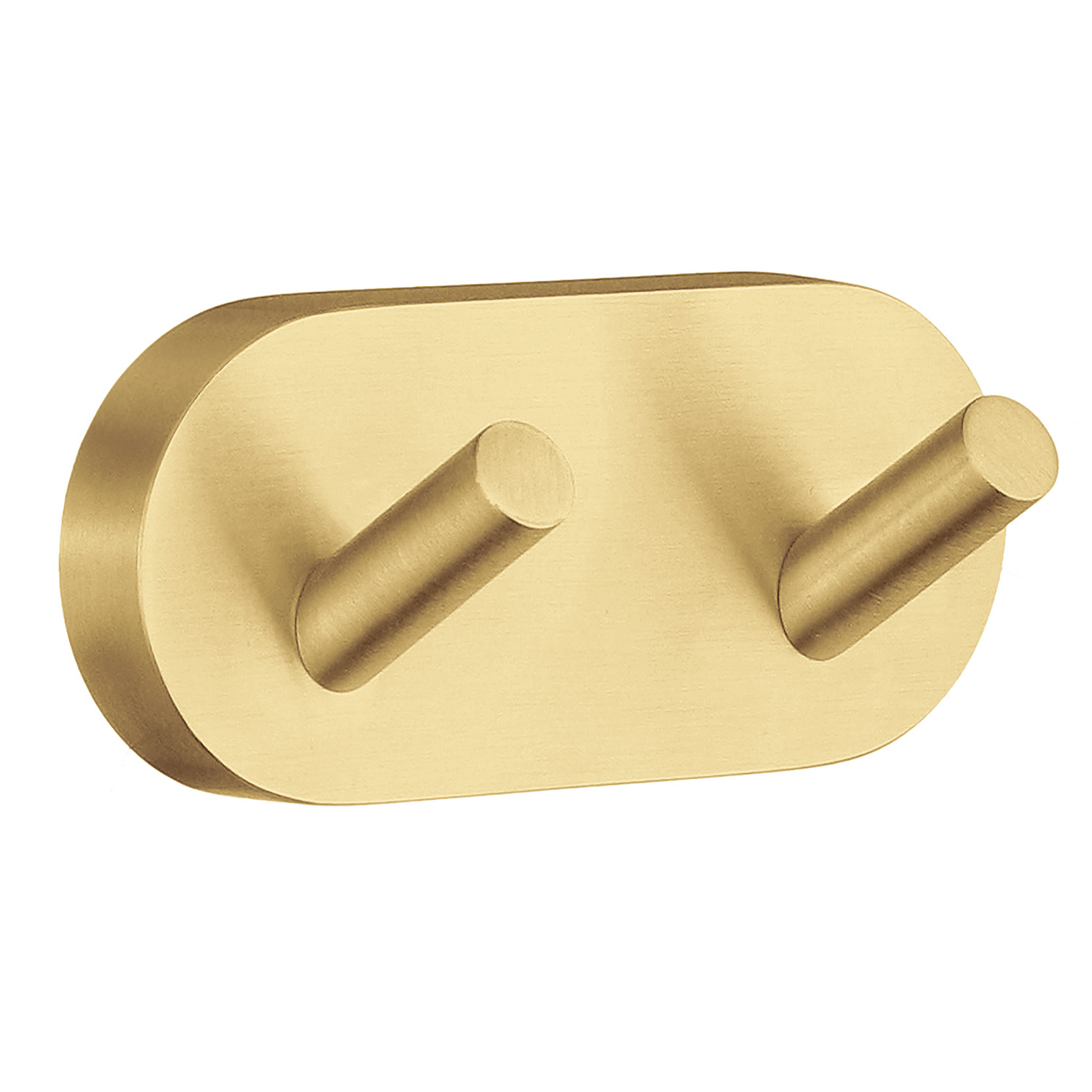Benefits of Double Towel Hooks in Bathrooms

Double towel hooks are a simple yet effective addition to any bathroom, offering a range of benefits that enhance both functionality and aesthetics. They provide a convenient and organized way to hang towels, contributing to a more efficient and visually appealing bathroom environment.
Towel Storage and Organization
Double towel hooks offer a practical solution for storing and organizing towels in the bathroom. By providing two hanging points, they allow for the efficient use of space, making it easier to keep towels readily available and organized. This is particularly beneficial in smaller bathrooms where space is limited.
Types of Double Towel Hooks

Double towel hooks come in a variety of styles and materials, offering options to suit any bathroom décor and budget. These hooks are designed to accommodate two towels, making them a practical and space-saving solution for smaller bathrooms.
Material and Finish
The material of a double towel hook significantly impacts its durability, aesthetics, and price.
- Metal: Metal hooks are the most common type, offering durability and a wide range of finishes. Popular metals include stainless steel, brass, chrome, nickel, and bronze. Stainless steel is known for its resistance to rust and corrosion, making it a good choice for humid bathroom environments. Brass and chrome are popular for their polished look and classic appeal. Nickel and bronze offer a more rustic and vintage feel.
- Plastic: Plastic hooks are a more affordable option, often available in a variety of colors and designs. They are lightweight and easy to install, but they may not be as durable as metal hooks.
- Wood: Wooden hooks can add a touch of warmth and natural beauty to a bathroom. They are often made from hardwoods like oak or maple, which are durable and resistant to moisture. However, wooden hooks may require regular maintenance to prevent warping or cracking.
Mounting Styles, Bathroom double towel hooks
Double towel hooks are available in various mounting styles, allowing for flexibility in installation.
- Screw-Mounted: Screw-mounted hooks are the most common type, offering a secure and permanent installation. They are typically installed into walls or cabinets using screws and anchors.
- Adhesive-Mounted: Adhesive-mounted hooks are a convenient option for renters or those who prefer a temporary installation. They are attached to the wall using strong adhesive strips, which can be removed without damaging the surface. However, adhesive hooks may not be as durable as screw-mounted hooks and may not be suitable for heavy towels.
- Over-the-Door: Over-the-door hooks are a space-saving option that hangs over the top of a bathroom door. They are typically made from metal or plastic and are easy to install.
Design and Style
Double towel hooks are available in a wide variety of designs and styles, from minimalist to ornate.
- Contemporary: Contemporary hooks often feature clean lines, geometric shapes, and minimalist designs. They are typically made from polished metal, such as chrome or stainless steel.
- Traditional: Traditional hooks often feature ornate details, such as scrolls, curves, and decorative accents. They are typically made from brass or bronze and may have a polished or antique finish.
- Rustic: Rustic hooks often feature natural materials, such as wood or wrought iron. They may have a distressed or weathered finish, adding a touch of charm and character to a bathroom.
Installing Double Towel Hooks in Bathrooms: Bathroom Double Towel Hooks

Installing double towel hooks in your bathroom is a simple and effective way to add storage and enhance the overall aesthetic. The process is straightforward, requiring basic tools and some simple steps.
Installing Double Towel Hooks
Before starting, gather the necessary tools:
- Double towel hooks
- Pencil
- Level
- Measuring tape
- Drill (if needed)
- Screwdriver (if needed)
- Screws (if needed)
- Anchor (if needed)
It’s crucial to prioritize safety during installation. Wear safety glasses to protect your eyes from debris and use a drill with a secure grip.
Installing double towel hooks involves three primary methods: drilling, adhesive, or using existing fixtures.
Drilling
Drilling is the most secure method for installing double towel hooks, ensuring stability and durability.
- Locate the desired position for the towel hook. Use a level to ensure it is straight and aesthetically pleasing.
- Mark the location on the wall with a pencil.
- Use a drill bit that is slightly smaller than the diameter of the screw to create a pilot hole at the marked spot.
- If the wall material is drywall, use a drywall anchor to provide extra support.
- Insert the screw into the pilot hole and tighten it using a screwdriver.
- Attach the towel hook to the screw.
Adhesive
For a less permanent installation, adhesive-backed double towel hooks offer a quick and convenient solution.
- Clean the surface of the wall where you intend to install the hook.
- Remove the protective film from the adhesive backing.
- Press the hook firmly against the wall for at least 30 seconds to ensure a strong bond.
- Wait for the adhesive to dry completely before hanging towels.
Existing Fixtures
If your bathroom already has existing fixtures, such as a towel bar or a shelf, you can often install double towel hooks using them.
- Identify a suitable location on the existing fixture where you can attach the hook.
- Use screws or other appropriate fasteners to secure the hook to the fixture.
- Ensure that the hook is securely attached and can support the weight of towels.
Selecting the Optimal Placement
The placement of double towel hooks is crucial for both functionality and aesthetics.
- Consider the accessibility of the hooks, ensuring they are within easy reach for users.
- Place hooks near the shower or bathtub for convenient towel access after bathing.
- Consider the overall design of the bathroom and choose a location that complements the existing decor.
- Ensure that the hooks are positioned at a height that allows for easy hanging and removal of towels.
